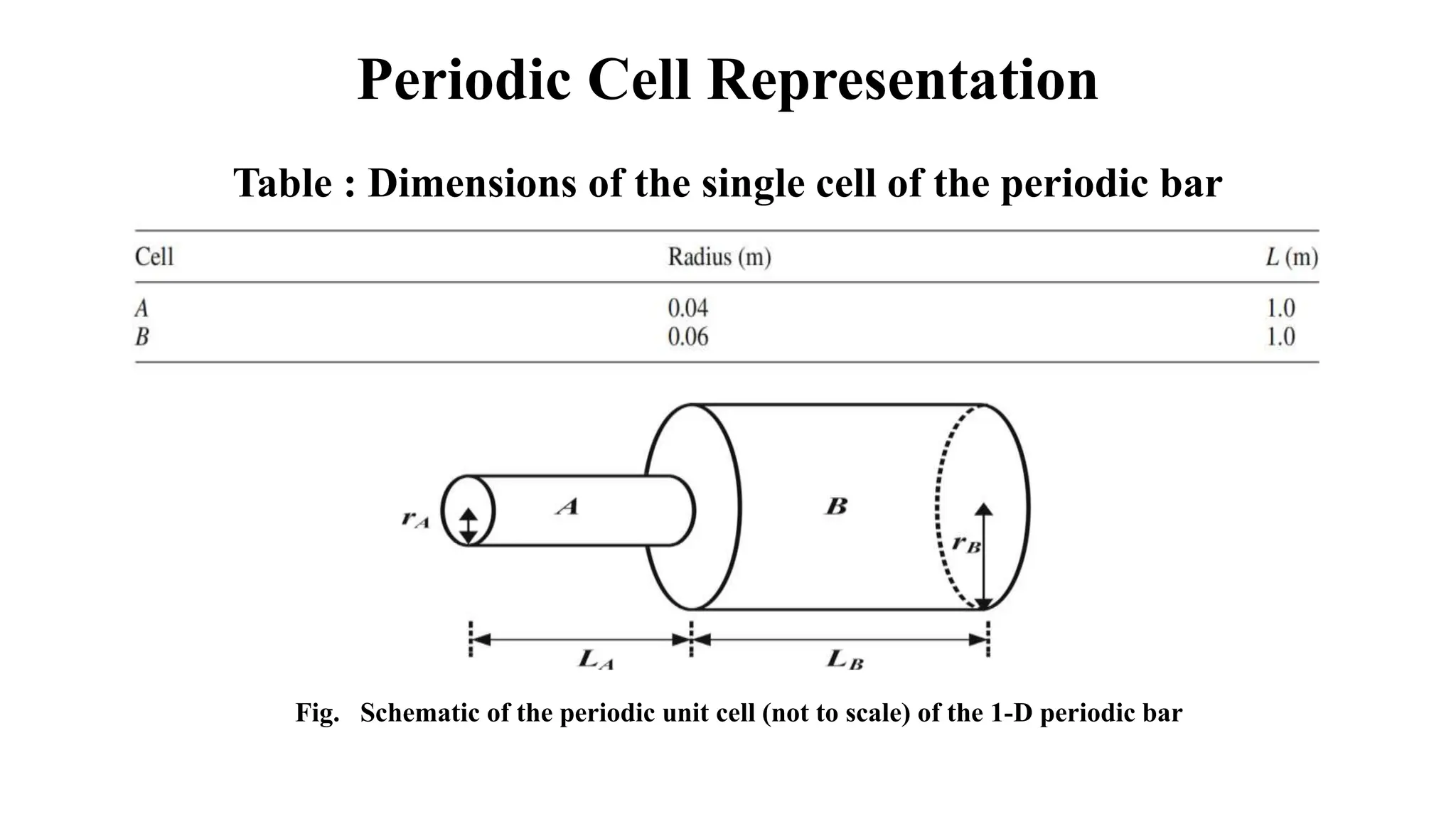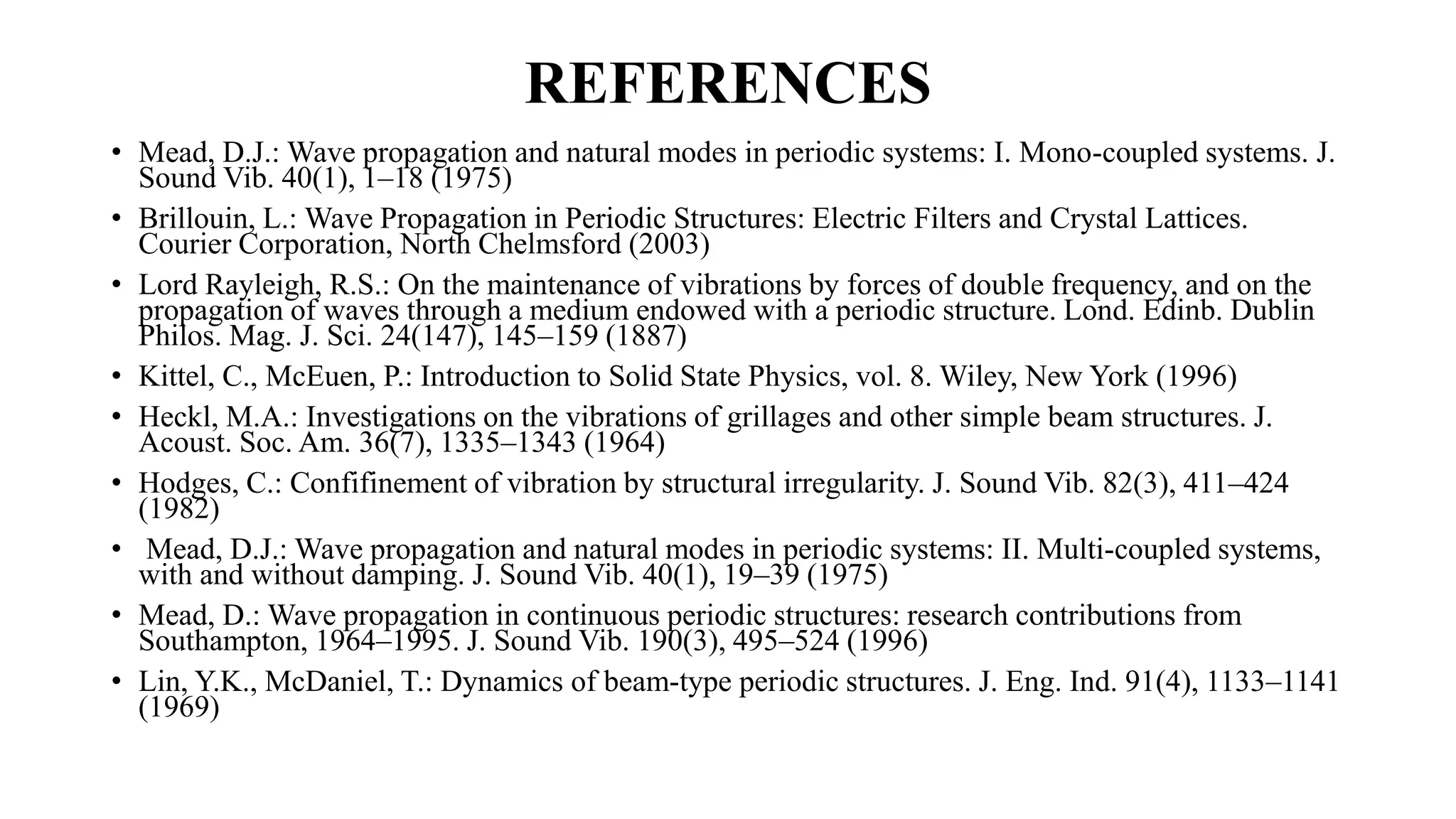The document discusses periodic structures, defined as materials that repeat an identical unit cell, and explains how stop bands are created due to destructive interference in wave propagation. It highlights the transfer matrix method (TMM) and Bloch’s theorem as popular analysis techniques for these structures, emphasizing their efficiency in reducing computational costs. The document also references various studies and literature on wave propagation in periodic systems.










